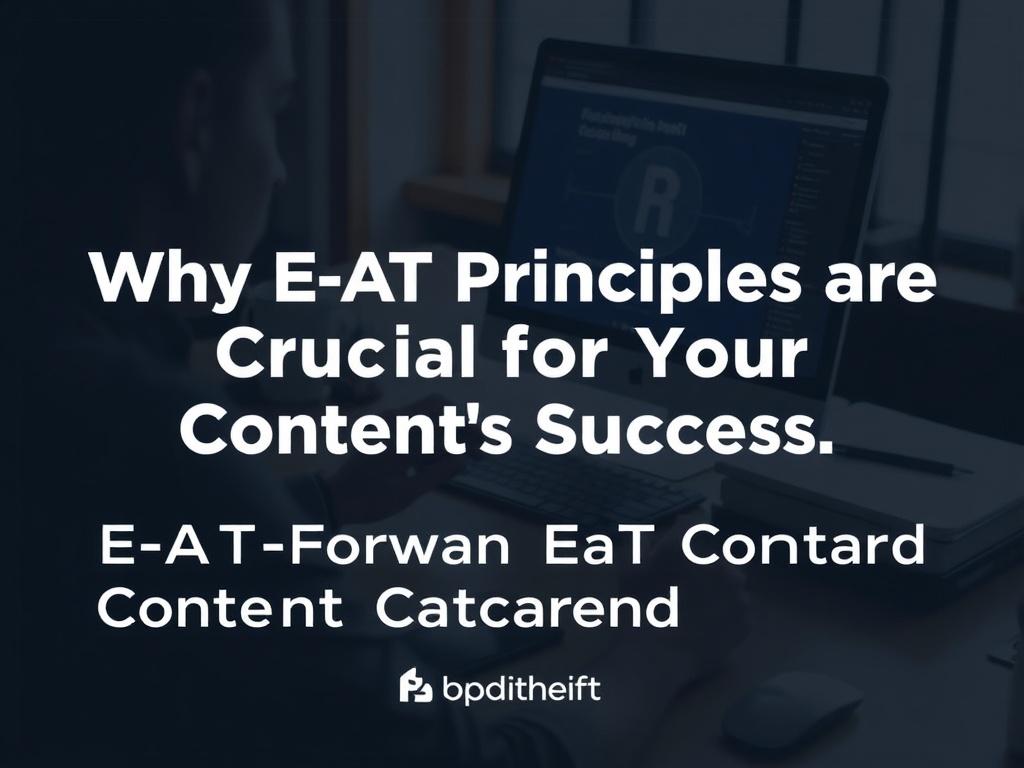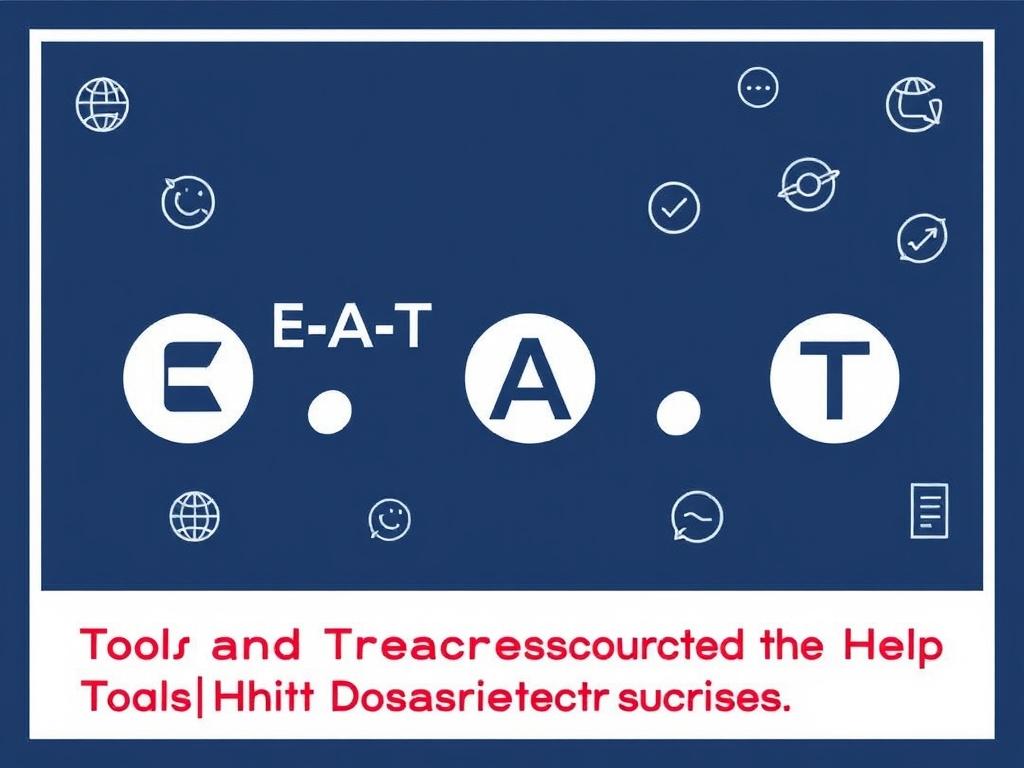Search engines and human readers both reward content that feels credible, clear, and useful. If you’ve ever wondered why some articles on the same topic outperform others, or why your carefully researched post doesn’t attract backlinks or conversions, the answer often comes down to E-A-T: Expertise, Authoritativeness, and Trustworthiness. These three pillars shape not only how search engines rank pages but also how real people perceive your brand and decide whether to engage, share, or buy. In this article, we’ll walk through why E-A-T matters, how it works in practical terms, and step-by-step strategies to make it central to your content strategy. Expect actionable advice, helpful checklists, examples, and a realistic plan you can start implementing today.
What E-A-T Means, in Plain Language
E-A-T stands for Expertise, Authoritativeness, and Trustworthiness. Put simply, it’s a way of thinking about how content creators demonstrate credibility. Expertise answers the question: Does the author know what they’re talking about? Authoritativeness asks: Do others in the field recognize this author or site as a go-to source? Trustworthiness measures whether the information is reliable, transparent, and safe to act upon. While E-A-T is not a single algorithm, it is a guiding framework used extensively in search quality guidelines, and it increasingly influences ranking signals and user behavior.
Why E-A-T is More Important Now Than Ever
Content saturation and information noise have made trust a scarce commodity. Users are bombarded by headlines, blog posts, videos, and social media claims. As a result, both readers and search engines prioritize signals that help separate reliable content from speculation or misinformation. Search engines want to show results that satisfy users quickly and securely, and humans prefer content that feels authoritative and honest. E-A-T bridges those needs by offering a consistent set of qualities that make content perform better, convert more, and generate organic growth.
How Search Engines Use E-A-T
Search engines, especially Google, don’t publish a simple E-A-T score that you can tweak, but they do publish detailed Search Quality Rater Guidelines that use E-A-T as a core concept. Human raters assess pages against these criteria, and the feedback helps engineers refine algorithms that attempt to recognize similar characteristics automatically. In practice, this means that content demonstrating clear expertise, recognized authority, and transparent trust signals is more likely to rank well for competitive queries.
Quality Raters and What They Look For
Quality raters evaluate content on factors such as the reputation of the site, the author’s credentials, the accuracy and depth of information, and the presence of supporting citations or references. They also consider whether a page handles sensitive topics carefully—especially in YMYL (Your Money or Your Life) categories like health, finance, legal advice, and safety. Pages that lack E-A-T can be flagged as low quality even if they are grammatically correct or well-designed.
Breaking Down E-A-T: Practical Signals You Can Control
While you can’t directly tweak a hidden «E-A-T meter,» you can control many tangible signals that collectively demonstrate expertise, authoritativeness, and trustworthiness.
Expertise: Showing You Know Your Stuff
Expertise is shown through accurate, in-depth content, author bios that show credentials or relevant experience, and by citing reputable sources. You can increase perceived expertise by using domain-specific language where appropriate, explaining complex ideas clearly, and providing evidence such as case studies, data, images, or screenshots.
Authoritativeness: Being Recognized by Your Peers
Authoritativeness grows from external recognition: backlinks from reputable sites, mentions, social proof, and engagement from peers. Guest appearances, interviews, or citations on high-quality websites all add to your authority. A strong author profile that’s consistent across platforms also helps—think LinkedIn, professional bios, and industry directories.
Trustworthiness: Being Transparent and Safe
Trustworthiness is about more than accuracy; it includes transparency, editorial standards, privacy protections, and clear contact information. Use secure site practices (HTTPS), provide an easily accessible privacy policy and terms of service, and offer visible ways to contact you. For transactional pages, show clear refund policies, shipping terms, and secure checkout signals.
How E-A-T Affects Different Kinds of Content
E-A-T matters for every kind of content, but the level of scrutiny varies. Understanding those differences helps you decide where to invest effort.
YMYL Content Requires Higher E-A-T
Your Money or Your Life (YMYL) pages include anything that could significantly impact a reader’s health, financial stability, safety, or legal status. For these, E-A-T is critical. Medical advice should cite medical authorities; financial recommendations should be supported by credentials and verifiable track records. Mistakes or misleading information in YMYL niches can be harmful and are treated more strictly by both users and search evaluators.
Non-YMYL Content Still Benefits from E-A-T
Even lifestyle content, hobby posts, and entertainment pieces benefit from clear authorship, accurate facts, and reputable links. Readers are more likely to share and link to content they trust, and search engines reward signals of expertise and authority across all categories.
Practical Steps to Build E-A-T Into Your Content Strategy
This section lays out a step-by-step playbook. These are actions any content team or independent creator can take right away.
1. Build Author Profiles That Matter
Start by creating detailed author bios that include relevant credentials, experience, and links to professional profiles. If the topic is technical or sensitive, include degrees, certifications, publications, or work history. Where appropriate, add a photo and a short narrative that humanizes the author and frames their perspective.
2. Cite Reputable Sources and Use Primary Data
Back up claims with authoritative sources: academic papers, government publications, reputable industry journals, or original research. When you can, use primary data from your own studies, surveys, or experiments. Readers and search engines both reward content that shows you did the work.
3. Publish Transparency Documents
Add an editorial policy page, disclose any conflicts of interest or sponsorships, and explain how content is reviewed and updated. This transparency reassures readers and aligns with quality rater expectations.
4. Improve On-Page Signals
Clear headings, structured content, high-quality images, and accessible formatting all boost user experience and perceived quality. Use schema markup where relevant to show authorship, ratings, and the type of content. Fast page load and mobile-friendly design are not E-A-T per se, but they support trust and authority by making content easy to use.
5. Earn Quality Backlinks and Mentions
Focus on outreach that leads to mentions and links from reputable sites in your field. Publish research-style content, expert roundups, and thought leadership that others want to cite. Partnerships, interviews, and speaking engagements can also elevate authority.
6. Address Negative Signals Proactively
Monitor reviews, forum discussions, and social mentions. Correct factual errors, respond to critiques constructively, and make it easy for users to report problems. Publicly addressing issues increases trust.
Content Formats That Show E-A-T Well
Different formats allow you to demonstrate E-A-T in distinctive ways. Choosing the right format for your audience and topic improves both usefulness and credibility.
Case Studies and Original Research
Case studies and original research are among the strongest signals of expertise and authority. They offer unique value because they can’t be copied and often attract backlinks and citations. Include methodology, sample size, and raw data when appropriate.
Interviews and Expert Panels
Featuring recognized experts in interviews, podcasts, or panel discussions transfers some of their authority to your site. Make sure you provide clear bios and links to the experts’ credentials.
How-To Guides and Tutorials
Well-structured, detailed tutorials that solve real problems are highly shareable and demonstrate practical expertise. Include step-by-step instructions, troubleshooting tips, and clear visuals.
Opinion Pieces and Thought Leadership
Thought leadership works best when supported by experience and evidence. An opinion backed by data, case examples, and transparent credentials can boost authoritativeness rather than undermine it.
Signals and Metrics to Monitor
You should measure signals that indicate whether your E-A-T efforts are working. Some are direct, and others are proxy metrics.
Direct Signals
— Mentions in reputable publications and industry citations
— Author profile links on trusted sites
— Awards, certifications, or recognitions listed on your site
Proxy Metrics
— Organic traffic growth for pages updated with improved E-A-T
— Backlinks from authoritative domains
— Time on page and bounce rate (contextual)
— Social shares and engagement from industry professionals
Example Measurement Table
| Metric | Why It Matters | How to Improve |
|---|---|---|
| Backlinks from authoritative sites | Signals external recognition and authority | Create original research, outreach, and PR |
| Organic rankings for target keywords | Shows search engines trust your content | Improve content depth, author info, and citations |
| Time on page / Engagement | Indicates content is useful and satisfying | Enhance readability, add visuals, and interactivity |
| User reviews / Ratings | Reflects real-world trust and satisfaction | Request reviews, respond to feedback, and resolve issues |
Common Mistakes That Undermine E-A-T

Even well-meaning creators can harm their perceived E-A-T. Recognizing common pitfalls helps you avoid them.
Vague Author Information
An “About the author” line that reads like a generic bio doesn’t build trust. If you cover technical topics or YMYL content, avoid anonymity. Supply verifiable credentials or explain relevant experience.
Lack of Source Attribution
Presenting claims without supporting sources looks unprofessional. Even when you’re synthesizing widely known facts, cite reputable sources to reinforce accuracy.
Thin or Repetitive Content
Short, surface-level posts that merely rephrase existing content without adding new value tend to underperform. Aim for depth over churn and prioritize unique insights.
Poor Site Hygiene and Security
Broken links, outdated information, or an unsecured site can erode trust quickly. Keep content updated, fix technical issues, and ensure secure data handling.
How to Plan an E-A-T-Forward Content Calendar

A content calendar guided by E-A-T prioritizes high-impact content types and allocates resources for research, verification, and outreach.
Step-by-Step Planner
- Audit existing content for E-A-T gaps: author info, citations, factual accuracy.
- Classify content by YMYL risk and audience impact.
- Identify priority topics that benefit most from original research or expert contributions.
- Allocate resources: subject matter experts, editors, designers, and PR/outreach.
- Publish with strong author bios and source lists. Use schema where relevant.
- Promote via outreach to industry publications and influencers.
- Track metrics and adjust the calendar based on performance and feedback.
Types of Content to Prioritize
- Original research and in-depth reports
- Expert interviews and contributed articles
- Comprehensive how-to guides and tutorials
- Updated cornerstone content for evergreen topics
- Transparent policy and editorial guideline pages
Working with Experts and Freelancers
If you don’t have in-house experts, collaborate with reputable freelancers, consultants, or trusted contributors.
Best Practices for Collaborations
- Vet credentials and past work. Ask for references or links to published writing.
- Provide clear briefs that emphasize accuracy, sources, and target audience.
- Offer contracts that clarify ownership, revisions, and disclosure requirements.
- Include author bios and link to the contributor’s professional profiles.
- Fact-check and edit rigorously before publishing.
SEO and E-A-T: Friend or Foe?
E-A-T should complement SEO, not replace it. Good SEO practices make content discoverable, while E-A-T ensures content is trusted and valued once discovered.
Integrating SEO Tactics with E-A-T
— Use keyword research to guide topics but don’t sacrifice depth for density.
— Structure content for readability: clear headings, bullet lists, and summaries.
— Use internal linking to connect related authoritative content.
— Implement schema to provide explicit signals about authorship, reviews, and articles.
— Optimize for user intent: satisfy the searcher’s need fully to earn engagement and links.
Dealing with Reputation Issues
Every brand faces criticism at some point. Managing reputation is part of maintaining E-A-T and often requires both public and private actions.
Steps to Recover or Strengthen Reputation
- Monitor mentions with alerts and social listening tools.
- Address factual inaccuracies publicly when appropriate.
- Respond to feedback professionally and fix systemic problems.
- Publish transparent explanations or corrections if errors occurred.
- Highlight third-party validation: awards, certifications, or testimonials.
Tools and Resources That Help Demonstrate E-A-T

Several tools can help you track, measure, and enhance E-A-T signals.
Research and Citation Tools
— Google Scholar and academic databases for sourcing studies.
— Industry journals and official consortium reports.
Reputation and Backlink Monitoring
— Tools like Ahrefs, Moz, and SEMrush to track backlinks and referring domains.
— Brand monitoring platforms to catch mentions across the web.
Authorship and Schema
— Structured data testing tools to validate schema markup.
— CMS plugins or modules that help manage author profiles and metadata.
Analytics and Behavior Measurement
— Google Analytics and Search Console for organic performance and user behavior.
— Heatmapping and session recording tools to understand engagement.
Case Studies: Real Examples of E-A-T in Action
To bring this to life, here are a few conceptual examples showing how E-A-T changes outcomes.
Small Health Blog That Grew Traffic
A niche health blog with anecdotal content switched to featuring articles written by a registered dietitian, added citations to peer-reviewed studies, and published an editorial policy. Within six months, several articles began ranking for competitive long-tail queries, and the site gained backlinks from small medical associations.
Financial Advisor Firm That Built Authority
A boutique financial advisor published a series of original research pieces about retirement savings trends, recruited guest posts from recognized economists, and had consistent author bios linking to firm credentials. They observed an increase in organic leads and were cited by industry press.
Online Retailer That Improved Trust Signals
An e-commerce site focused on improving trust by adding detailed product pages, secure checkout, visible return policies, and verified reviews. They also cleared up outdated product claims and added author or curator information for buyer guides. Conversion rates improved alongside search performance.
How Long Does It Take to See Results?
E-A-T improvements rarely produce overnight changes. Expect a timeline of several months to a year depending on the scale of changes, competitiveness of the niche, and the types of signals you build. Earning authoritative backlinks and industry citations often takes time and consistent outreach, while on-page changes like author bios and citations can have quicker effects on perception and possibly rankings.
Checklist: Quick Audit to Improve E-A-T
- Do all major content pieces have a clear author with credentials?
- Are sources cited and linked, especially for claims and data?
- Is the content accurate, well-researched, and useful to the target audience?
- Are contact details, privacy policy, and editorial information easy to find?
- Is the site secure (HTTPS) and technically sound (fast, mobile-friendly)?
- Are there outbound mentions or backlinks from reputable sources?
- Do you publish original research or unique perspectives that others might cite?
- Is there a process for correcting errors and updating content?
Final Thoughts on Embedding E-A-T Into Your Culture
E-A-T isn’t a one-off checklist; it’s a mindset. Organizations that treat credibility as central to their mission tend to produce content that performs better over time. That requires cross-functional collaboration—content creators, subject matter experts, editors, legal and customer service teams all play a part. The good news is that many E-A-T improvements are also improvements in quality, user experience, and conversion. When in doubt, prioritize clarity, accuracy, transparency, and respect for your audience. Those choices reward you both in search engines and, more importantly, in the loyalty of real people.
Conclusion
E-A-T is the practical framework that bridges what search engines seek and what real people trust: expertise demonstrated through accurate and valuable content, authoritativeness earned through recognition and citations, and trustworthiness built through transparency and responsible practices. Whether you run a blog, an e-commerce site, or a large publishing outlet, investing in author credibility, sourced content, clear policies, and reputation management will pay dividends over time. Start with an honest audit, fix the most visible gaps first—especially for YMYL topics—then create a content plan that prioritizes originality and verification. By making E-A-T part of your everyday content process, you create a foundation for sustainable traffic, stronger engagement, and lasting authority in your niche.